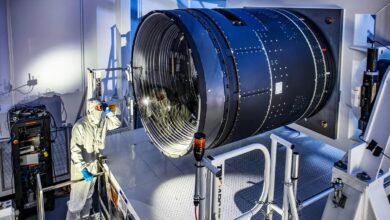Animated video of the discovery of a relativistic jet, launched by a black hole. The new AT2022cmc signal was detected by researchers at MIT and elsewhere. This video was produced by MIT, with the collaboration of Dheeraj Reddy (MIT), Tomás E. Müller Bravo (ICE-CSIC and IEEC) and Noel Castro Segura (University of Southampton), among others. Credit: Dheeraj Pasham, Matteo Lucchini, and Margaret Trippe
Technology The WorldLearning More About Black Holes, with the Brightest Discovery of Its Kind
Astronomers shared their findings when an extraordinary flash was detected in the night sky so multiple telescopes would focus on the signal. The fruit of their collaboration? The discovery of a supermassive black hole halfway across the universe!
“We know there is one supermassive black hole per galaxy, and they formed very quickly in the universe’s first million years,” explains Matteo Lucchini, co-author of the study and postdoc in MIT’s Kavli Institute for Astrophysics and Space Research. “That tells us they feed very fast, though we don’t know how that feeding process works. So, sources like a tidal disruption event (TDE) can actually be a really good probe for how that process happens.”
Researchers from NASA, Caltech, and elsewhere were the first ones to observe the flash that gave off more light than 1,000 trillion suns. Named AT 2022cmc, the signal comes from a relativistic jet of matter streaking out at 99.99% the speed of light from a supermassive black hole that suddenly started to devour a nearby star. AT 2022cmc is brighter than any TDE discovered to date – believed to be 100 times more powerful than the most powerful gamma-ray burst afterglow – and the farthest ever at some 8.5 billion light-years away which is more than halfway across the universe.



